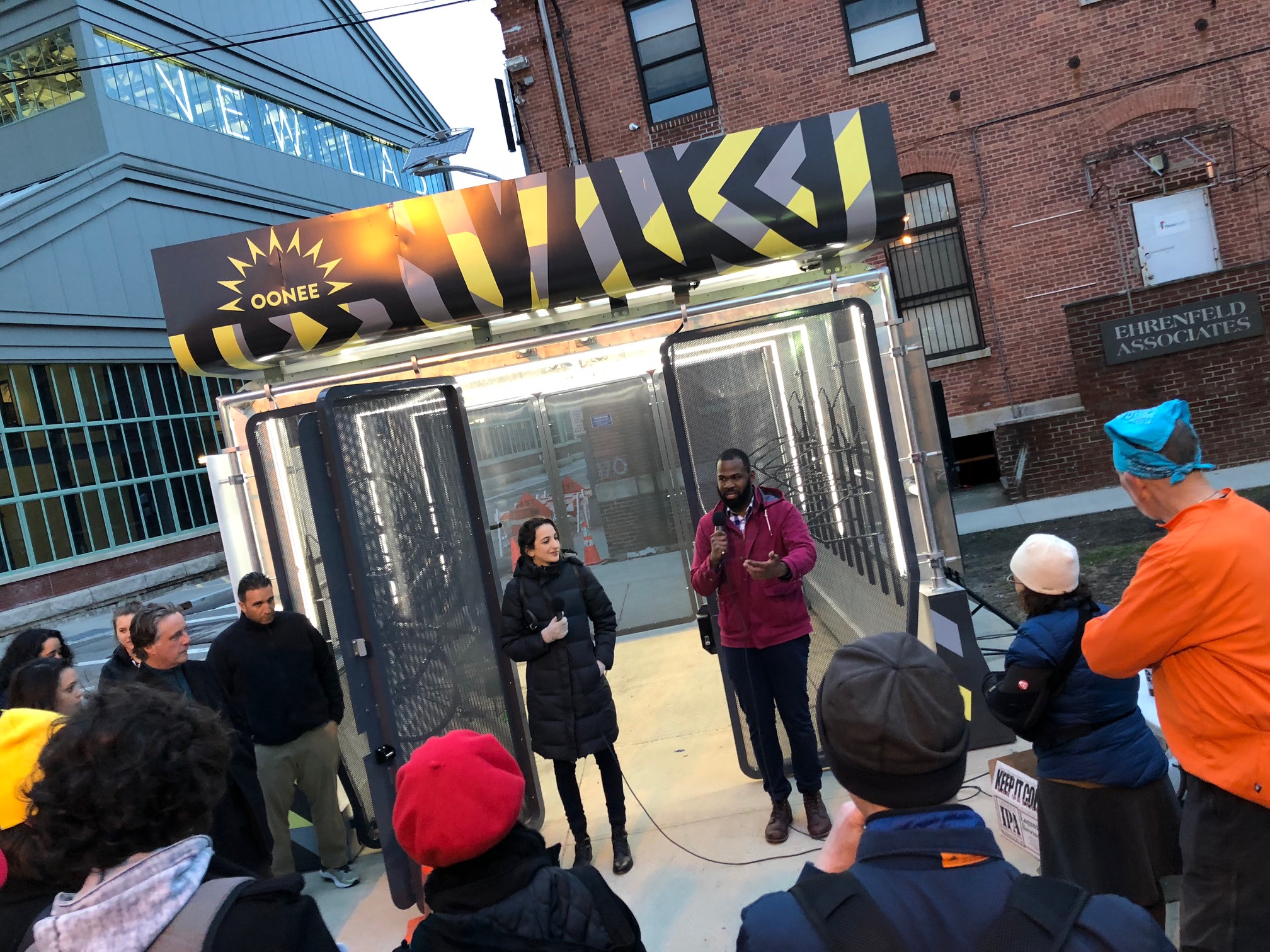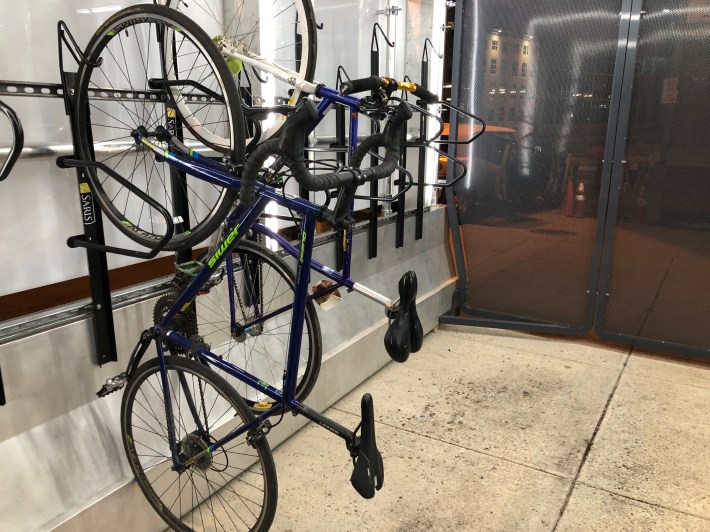If circumstances compel you to lock up your bike outside in NYC, before long you might give up on the idea of owning a bicycle.
Shabazz Stuart knows the feeling of losing a bike to theft all too well. In one five-year span, three of his bikes were stolen. But he wasn't about to resign himself to bikelessness.
At the time his third bike got nicked, in 2015, Stuart was working at the Downtown Brooklyn Partnership. He started talking to local businesses, property owners, and people who bike in the neighborhood about how to provide publicly accessible, secure bike parking.
"I realized that there wasn't anything on the market that could accommodate the needs of all these groups," he told Streetsblog. "Cyclists wanted affordable bicycle parking, property owners wanted a public space activator, and no one wanted to pay to build and operate the solution. We realized that we had to invent a new one."
Fast forward to this past Tuesday. After three years of legwork and sweat equity, Stuart and his business partner, Manuel Mansylla (a.k.a. Manman), unveiled the prototype for what they hope will become a new fixture of New York City's public spaces: the Oonee Pod.
The prototype pod, currently in use for bike parking at the Brooklyn Navy Yard, is a 14-foot cube that can hold 20 bikes in less square footage than it takes to park two cars. A single 7-by-14-foot module (the Navy Yard installation is two modules) doesn't occupy much more real estate than a bus stop shelter, and would have a smaller footprint than a standard parking space.
Any bike storage solution will have a spatial advantage over cars, though. What sets the Oonee Pod apart, say Stuart and Mansylla, is its flexibility.
The ideal among people who obsess over urban bike storage tends to be something like Japan's underground, automated bike parking systems. It's brilliant and functional, but rigid. Stuart thinks importing that model won't fly in New York. It would never clear the thicket of approvals and bureaucracy that must be dealt with to build permanent structures here, not to mention the tangle of underground utilities.
Instead, the Oonee Pod circumvents all the red tape, because it's not a permanent structure.
Each module consists of 270 standardized parts. It can be assembled or taken apart in a day.
The key to the structure, said Mansylla, is the footing. Each module is anchored by two plastic Jersey barriers filled with water or sand. "That gives us the ballast we need," he said. "It can't be tipped over." But the Jersey barriers can be emptied and the components stored easily when disassembled. Mansylla likened it to a Lego kit.

Mansylla, the creative director for Oonee, drew inspiration from his work designing small, modular platforms for DOT's Street Seats program. "That led me to understand the need for readily available public infrastructure," he said. "I realized there was a big need and a lot of potential."
While secure bike parking was the impetus for the Oonee Pod, Stuart and Mansylla see it as a flexible structure that can support other functions, like seating, vending, or storage. Hence the brand name, Stuart explained, a homophone for uni, the "famously malleable" sea urchin that "can be found in a variety of underwater environments."
"If we want to get [to scale] across New York City, we need a viable business model that makes people happy, not just cyclists," said Stuart. "A hundred people may use it every day -- what about the 100,000 who are walking by?"
The prototype -- a colorful, brightly lit cube with vertical bike racks on two walls, drawing power from the grid -- is "the minimum viable product," he said.
The next layer of functionality is the app. Subscribers would pay a monthly fee, say $10, for access to Oonee bike storage. An active subscription would be required to unlock an Oonee Pod. Stuart expects the app and a solar-powered version of the pod to go live in the next few months. Another iteration in the works would replace the standard vertical racks, which cyclists lock up to themselves, with self-locking racks that would function like bike-share docks.
Eventually, Stuart sees the app as "a gateway to a much better experience" for cyclists, with other bike-related services on offer. If you catch a flat, for instance, you should be able to drop your bike off at the nearest Oonee and order up a new tube while you go about your day.
The bike shops Stuart has spoken to are intrigued. "If real estate is available for maintenance services, there's an appetite" to provide them, he said.
There's a long way to go before reaching their goal of 20,000 secure bike racks in NYC, but Stuart and Mansylla are drawing interest from property owners and expect to expand beyond the Navy Yard in short order.
Keep your eyes peeled for more Oonee Pods popping up before the summer is out.







